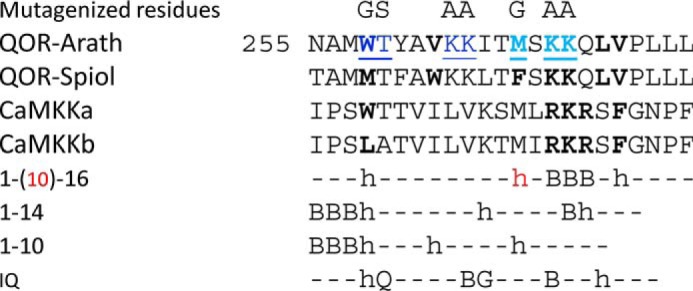Figure 11.

Comparison of the CaM-binding domain of ceQORH from Arabidopsis and spinach to the major classes of CaM-binding domains. h indicates a hydrophobic residue, and B indicates a basic residue. In the classical nomenclature of these classes, each number is positioning a hydrophobic residue in their consensus sequences (see the work of Yap et al. (23) and Tidow and Nissen (30)). The ceQORH peptides show closest similarity to the 1-16 class, which contains two isoforms of a calcium/calmodulin dependent protein kinase kinase (CaMKKa and CaMKKb). Other classes are the 1-14 class (comprising the 1-14, 1-8-14, basic 1-8-14, and 1-5-8-14 subclasses), the 1-10 class (comprising the 1-10, 1-5-10, basic 1-5-10, and hydrophilic 1-4-10 subclasses), and the IQ class, to which the ceQORH CaM-binding domain appears more distally related. Residues that were mutagenized in ceQORH are indicated (dark blue in Mut1-ceQORH, light blue in Mut2-ceQORH, and both dark and light blue in Mut3-ceQORH).
